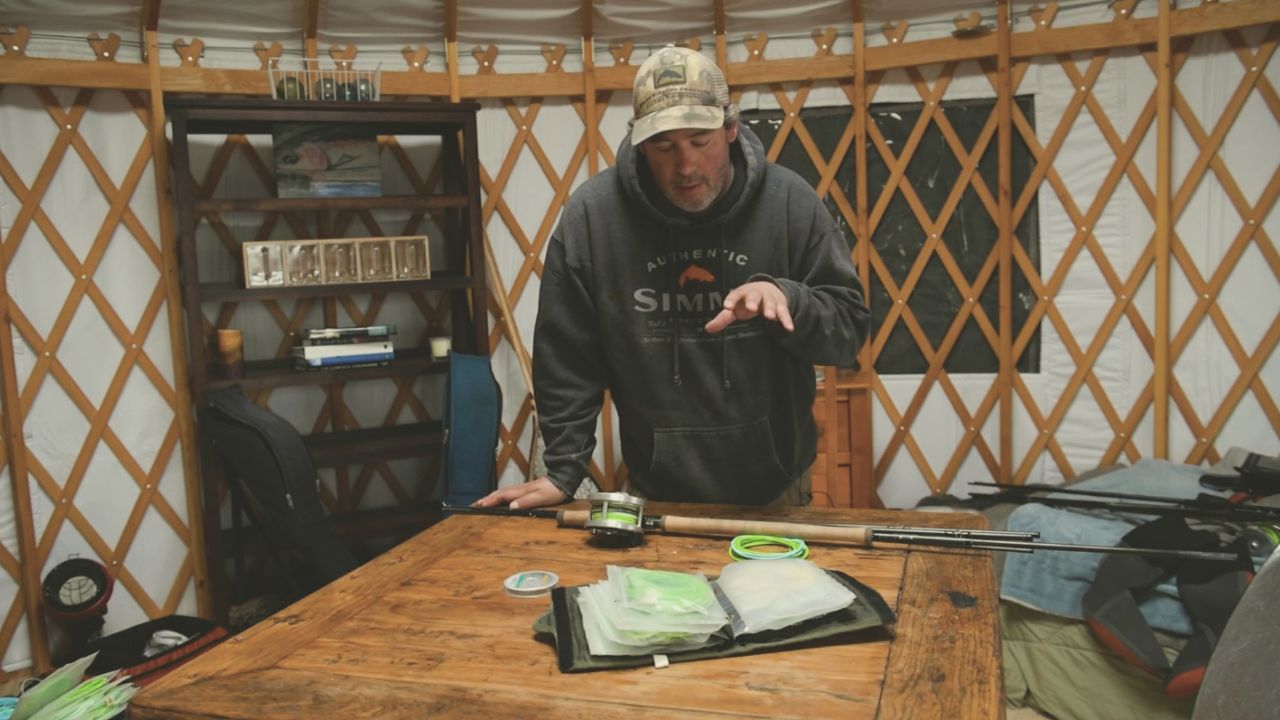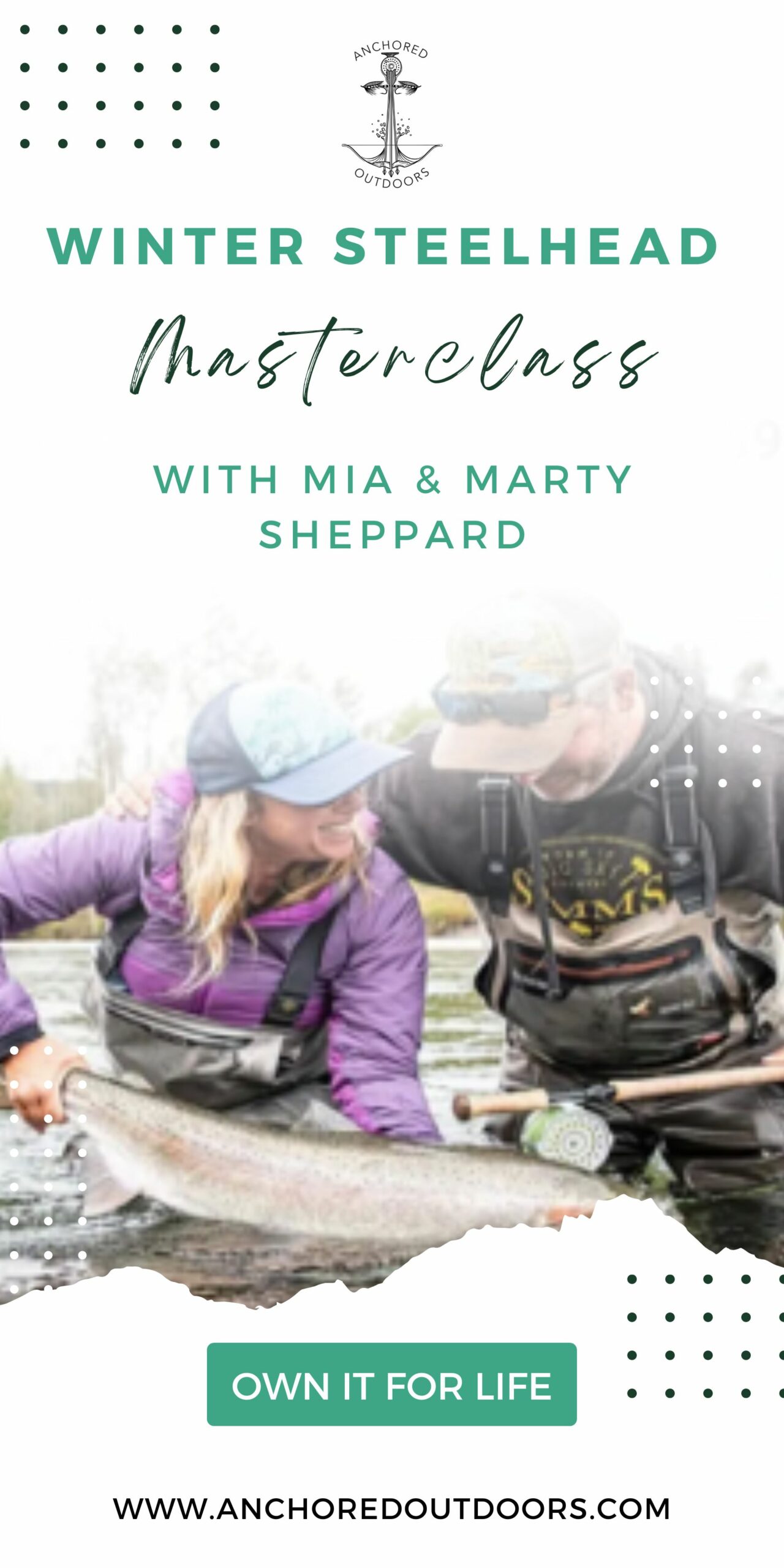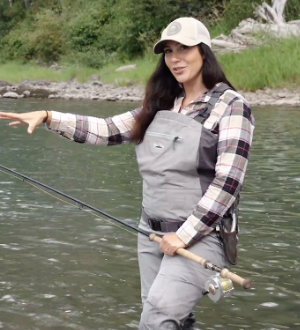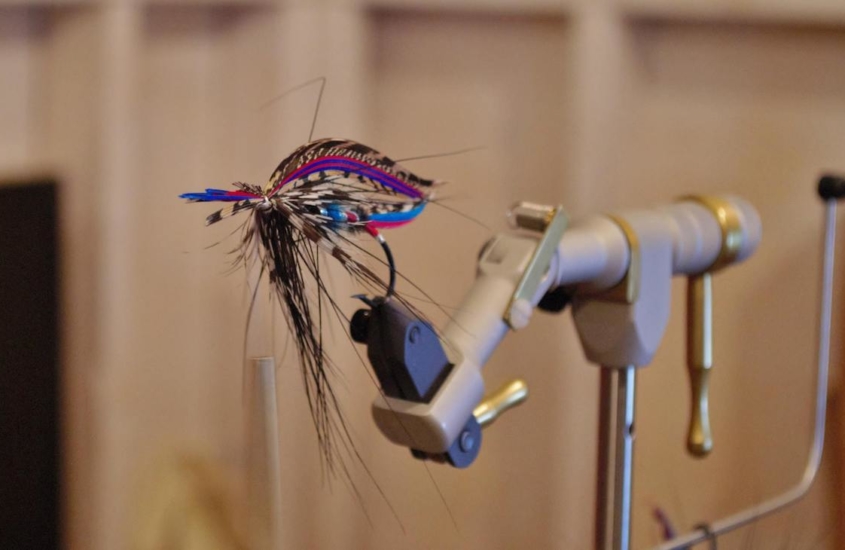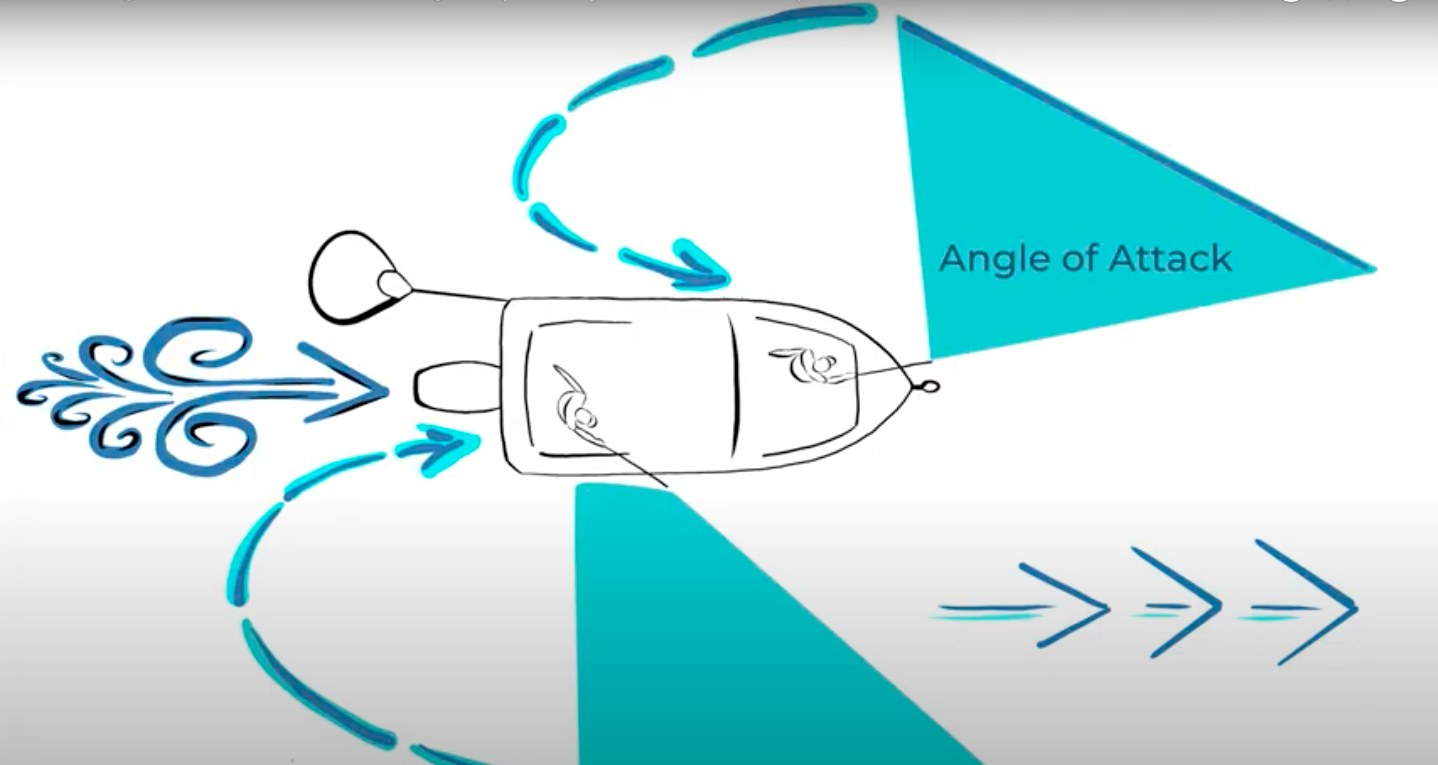In our online Winter Steelhead course with Mia and Marty Sheppard, there’s a strong focus on the necessary gear to get your fly down to the fish. Fly fishing for winter steelhead can require a unique list of equipment (especially when Spey casting), including your fly line. These days, two of the most popular types of lines used for steelhead fishing are the Skagit and Scandi lines. While both are designed as shooting heads specific to steelhead and salmon fishing, they each have distinct characteristics that make them better suited for different situations.
Skagit lines were first developed by a group of steelhead anglers in the Pacific Northwest. Characterized by its heavy head and short front taper, it allows for easy loading of the rod while generating a ton of power. Simply put, it’s the perfect tool for casting heavy sink-tips and large flies. One of the main advantages of the Skagit line is its ability to cast the heaviest of sink-tips with ease, and to carry a lot of line in the air, allowing for long distance casting, even in windy conditions. This makes it an ideal choice for fishing in fast and powerful rivers, or for targeting larger steelhead. In addition, the heavy head of the Skagit line allows for easy mending, which is especially useful when fishing in currents or heavy water.
On the other hand, Scandi lines were first developed in Scandinavia for Atlantic salmon fishing, and are characterized by their long front taper and light(er) head. This design allows for a more delicate presentation of the fly, and a more natural drift. Scandi lines are better suited for fishing in rivers where longer and more delicate casts and lighter flies are required. They are also good for fishing in moderate to low water conditions. The long front taper of Scandi lines provides a softer, more subtle delivery of the fly, which can be especially effective when fishing in clear water or when the fish are particularly finicky.
Both Skagit and Scandi lines have advantages and disadvantages, and choosing the right one for your needs comes down to your personal preference and the conditions you’ll be fishing in. It is important to match the line with the rod, and to take into account the size of the fish you will be targeting, the speed and strength of the current, as well as the size and weight of the flies you will be using.
One important aspect to keep in mind is that there are different variations of Skagit and Scandi lines, like ‘Hybrid’ lines, which have evolved over the years. These range from having integrated running line and sink tips, to slightly elongated Skagit lines designed to execute a longer casting stroke, yet still deliver a large weighted fly. These types of lines can offer the best of both worlds, combining the power of the Skagit line with the delicacy of the Scandi line, providing a versatile option for different fishing conditions and styles. There are countless options on the market for steelhead anglers today, so your best bet is to check with your local fly shop to see which line and setup is best for your casting style, angling preference, and intended fishery. Watch the video below to see Marty Sheppard take a deeper dive into what you’ll need to get started.
Fly lines are an essential component of fly fishing for steelhead, and selecting the right one can make a huge difference in your casting distance, accuracy, and ability to control the fly. Understanding the key characteristics and differences between Skagit and Scandi lines, as well as their variations, can help you make a more informed decision when choosing a line for steelhead fishing. With the right line, you’ll be able to cast farther, more accurately, and ultimately land more steelhead. Remember to take into account the conditions of the river, the size and strength of the fish you will be targeting, and your own casting style and preference. By having a good selection of lines to match the different conditions, and by maintaining them properly, you can make sure you are well-equipped for any situation that comes your way and make the most of your time fishing for steelhead.

